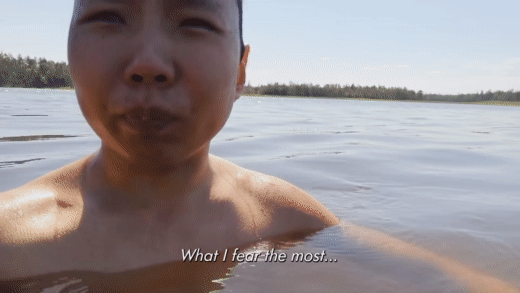It has been a month since Life in a Day 2020 launched to the world, first premiering at the Sundance Film Festival, and then on YouTube. The response has been extremely gratifying - approaching 14 million views, with exceptional comments from viewers.
It’s also been a real eye-opening experience in terms of how online communities come together and operate.
There were three parts of the project that really brought this to life for me.
The call out
As mentioned in our last blog post on this project, we had no idea what the response to the callout would be. With so many people now wielding cameras, and already uploading footage of their life to social platforms every day, would the idea of contributing to Life in a Day be as enticing?
The success of the callout (325k videos from 192 countries) suggests that the appeal is still there. In fact, I wondered if there was something about being seen beyond your own social accounts that specifically jumped out. Even for those who didn’t make it into the final film, contributing seems to have been a meaningful experience, and people were grateful for the opportunity to be part of something bigger than themselves.
In fact this was an idea that Kevin Macdonald represented in his direction of the film, particularly through a contributor who shared footage from his home in far reaches of Siberia.
The contributors Zoom call
One of the most mind-blowing moments of the whole project for me came after the film was finished, and we invited its hundreds of contributors to watch a virtual screening, before it was released publicly.
My fellow producer Jack suggested that after the screening, we invite everyone to join a Zoom call, as a kind of “after show party”. I have to admit, I thought this was a ludicrous idea -- how could you have hundreds of people who don’t know each other, just join a Zoom call? It would be chaos!
But the call itself was extraordinary. It was chaotic, extremely so, for about fifteen minutes, as people shouted into the ether, talking over each other.
However after a little while things calmed down, and a kind of free flowing structure emerged. People would announce where they were from, and others in the same country would make themselves known. Participants would ask if someone they had just seen in the film was on the call (“is the waving guy from India here?”), and there’d be a hushed silence as we waited to see if they emerged. At one point, a contributor took on a MC role, and started looking out for people who hadn’t said anything, and inviting them to say hello to the group.
The call went on 3 hours (!) and when we finally finished it, there were still over 100 people on the taking part.
It’s a cliche to say the internet connects people from around the world, and for most people, this early promise of the web isn’t really what their experience of it is (mine for instance is mainly using the web for work, shopping and reading the news).
But in this opportunity to actually talk to people from dozens of countries, to come together and spend a moment with each other that only technology could deliver, people found a sense of connection and excitement that felt like the promise of the internet when it was first invented.
There’s some Zoom calls in the film too, naturally.
The comments
As someone involved with putting videos on the internet, the comments box can be an unsettling place to hang out. As Flying Object we’ve had the experience of having a video we’ve made be set upon by far-right extremists - a truly horrible experience - but even just someone letting you know they felt your video could have been better can be crushing.
But the comments on Life in a Day 2020 are like few others I’ve seen or been involved with, specifically in terms of the impact the film has had on their lives:
It is easy to get into a mindset where you wish that “below the line” didn’t exist and to return to a simpler time where constant feedback wasn’t just a click away.
But without the comments and tweets, we’d have no idea what the response to the film was like. As a purely online release, you can’t sit in a room and hear people laugh or cry. But the comments give you an insight into what’s going on in the audience’s head, and the effect that the film has had on them.
What does it mean?
Of course for Life in Day, the internet’s potential to create community and collaboration is at the very heart of the idea.
But some of these lessons feel applicable to all kinds of projects and campaigns. Next time we’re working on a brief, the questions I’ll ask myself are:
- How can we open this idea up to involve the contributions and collaboration of people? And what are they getting out of taking part?
- How can we facilitate an experience that brings people together?
- What is the response we’re optimising for? How do we want people to feel? And where and how do we expect them to express that feeling?
If you haven’t yet seen Life in a Day 2020, it’s available for free on YouTube.




